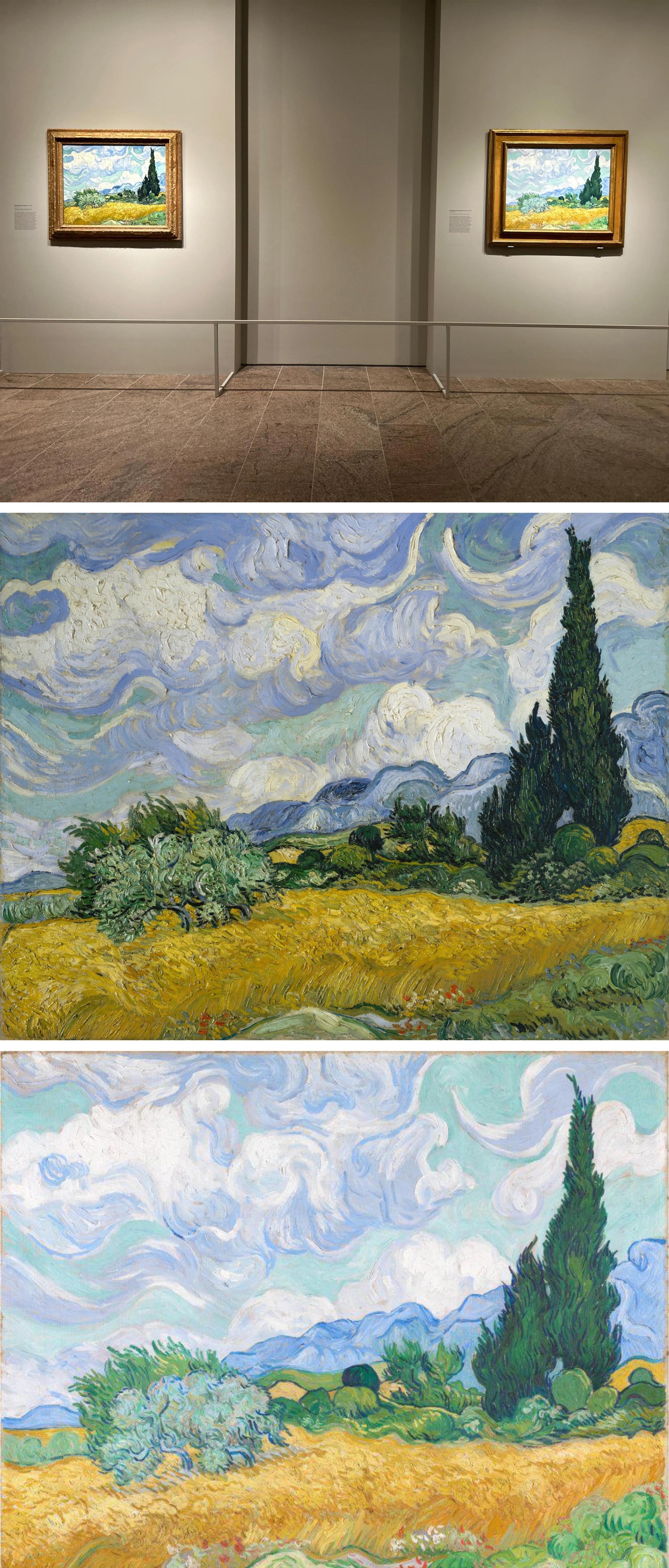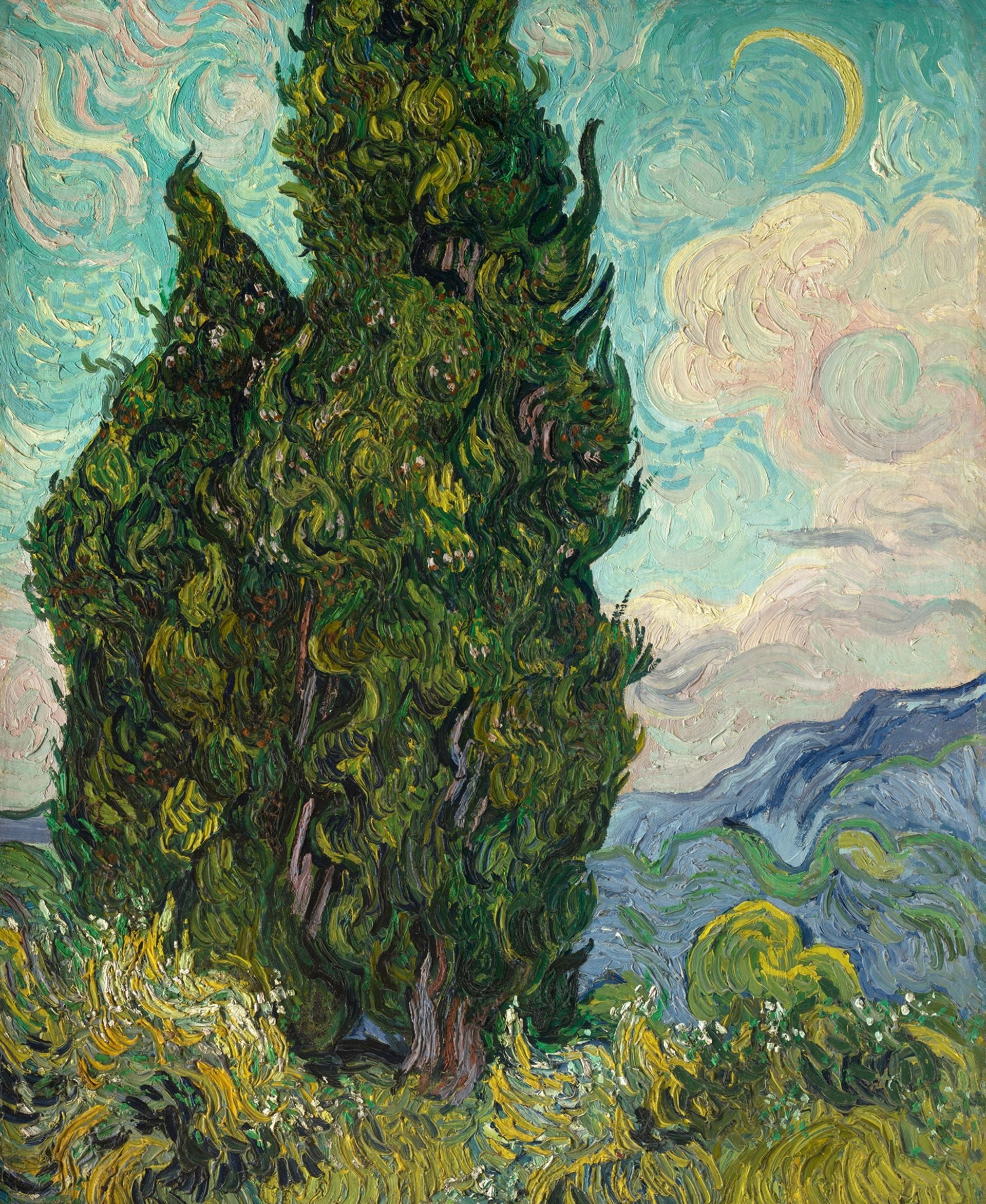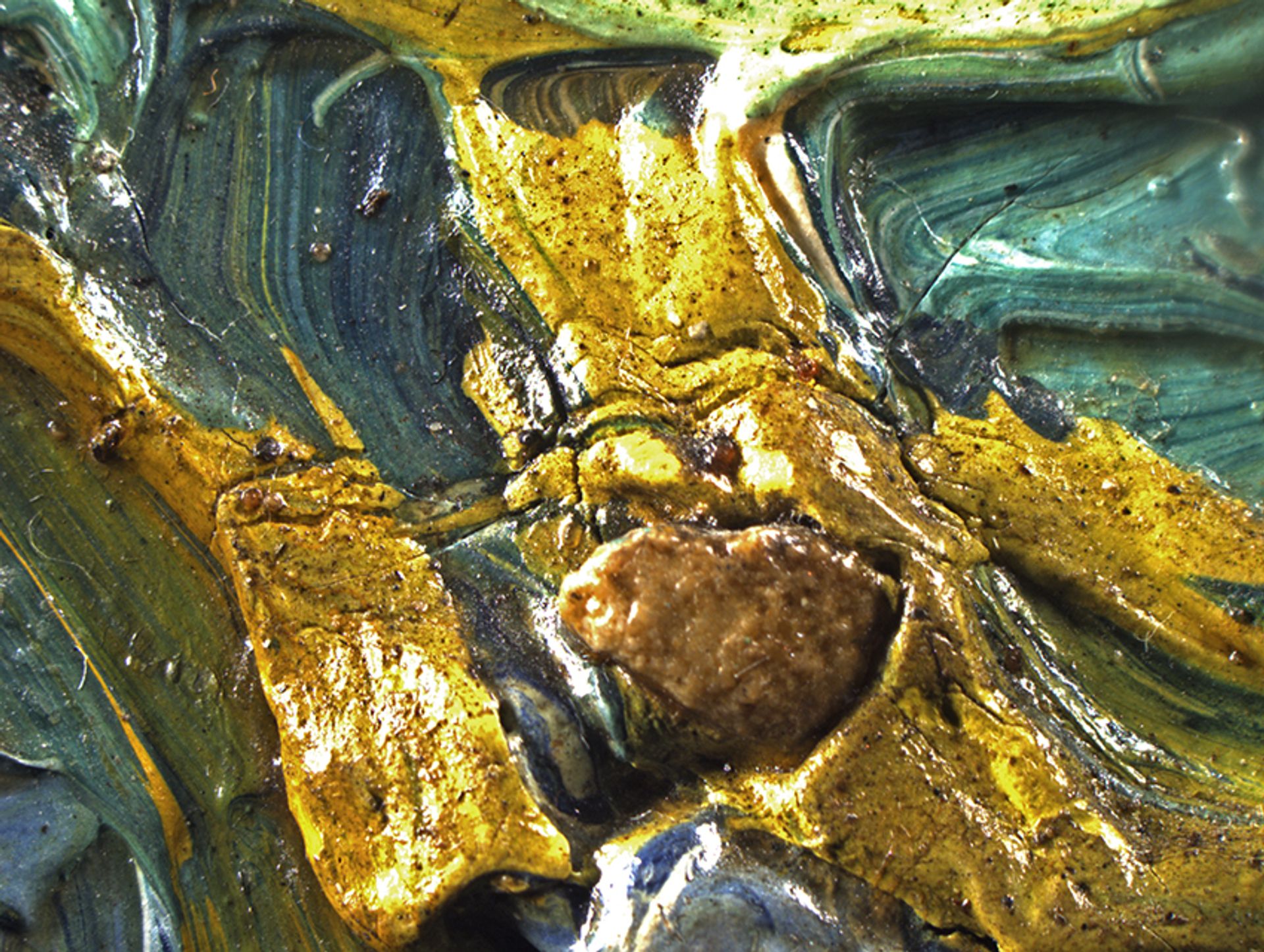Van Gogh’s Cypresses (May 22-August 27) at the Metropolitan Museum of Art in New York will examine how the artist animated his landscapes with these Provençal trees. The characteristics of the show Starry Night (June 1889), in which the artist captured their dynamic, twisted forms in a majestic composition.
In Starry Night the cypress trees soar skyward, creating a powerful visual link between earth and sky. The painting, arguably the Museum of Modern Art’s biggest attraction, was painted in the asylum where Van Gogh lived from May 1889 to May 1890. It was last loaned to an exhibition in 2007.
The Met show also includes the most expensive Van Gogh already auctioned Orchard with peach and cypress trees (April 1888). It sold for $117 million at Christie’s in New York last November.

by Van Gogh Orchard with peach and cypress trees (April 1888), which cost $117 million © Christie’s Images Limited 2022
In New York, the only place where the Cypresses were exhibited, there are 40 Van Goghs (26 paintings and 14 drawings), plus four letters with small sketches, rarely shown for conservation reasons. These are almost all of the artist’s compositions featuring these trees. Van Gogh began including cypress trees in his painted landscapes on the outskirts of Arles in 1888 and they became much more prominent after he moved to an asylum outside Saint-Rémy-de-Provence the following year .
Susan Stein, curator of the Met, concludes that, as Van Gogh had hoped, “the cypresses were destined to become a signature motif on a par with the sunflowers”.

Installation shot at Cypress by Van Gogh exhibition, Met on the left, National Gallery on the right; by Van Gogh Wheat field with cypresses (June 1889) from the Met; Wheat field with cypresses (September 1889) from the National Gallery
Credit (top to bottom): Martin Bailey; Metropolitan Museum of Art, New York (purchase, Annenberg Foundation Gift, 1993); National Gallery, London
One of the pleasures is seeing two versions of Wheat field with cypresses, both of the same size. It will be the first time that they have been brought together since 1901, when they were on sale at the Parisian merchant Bernheim-Jeune. Stein regards this composition as the “daytime counterpart” of Starry Night.
The first version, dating from June 1889, is in the Met’s own collection. It was painted outdoors in the countryside just beyond the walls of the asylum, which is confirmed by the discovery of a bale of wheat and tiny pieces of gravel in the paint. Van Gogh viewed the image as a study, to capture the motif. It has an immediacy. In 1951 the painting was purchased by Swiss arms dealer Emil Bührle, whose son sold it to the Met in 1993.
The second version, on loan from the National Gallery in London, was made in his asylum studio in September 1889. This work is more stylized and decorative. In 1923 the painting was purchased for the Tate Gallery for £3,300, representing the first Van Gogh in a British public collection, and in 1961 it was transferred to the National Gallery.

by Van Gogh Cypress (June 1889)
Credit: Metropolitan Museum of Art, New York (Rogers Fund, 1949, 49.30)
One of the most interesting discoveries is that another Van Gogh from the Met, Cypress, a composition centered around a pair of trees, seems to have tipped over Van Gogh’s easel. Curator Charlotte Hale and scientist Silvia Centeno found dozens of sand particles and small limestone pebbles, the largest 6mm in diameter, embedded in the paint, as well as plant matter. This confirms that the painting was painted outdoors.
Some of the thick impasto paint has been recessed, suggesting sand and pebbles were embedded when the image fell to the ground. This could well have happened when a powerful mistral wind was blowing. Van Gogh then painted some of the debris, presumably back in his studio.

Pebble found embedded in the painted surface of Cypress (highly magnified photomicrograph image)
Credit: Department of Paintings Conservation, Metropolitan Museum of Art, New York
The Met exposure is notable for some large private loans. These include Trees of the Asylum Garden (October 1889), which sold at auction for £9 million in 2010, and Landscape under a stormy sky (April 1889), sold for $54 million in 2015. larry ellisonthe co-founder of Oracle Corporation, ready Farm among the olive trees (December 1889).
A work that will definitely not come to the New York show is Va drawing by Gogh (June 1889) from his painting of Starry Night. This drawing is now in Russia.
Loans from Russia were never considered, but there is an additional problem with this key work. It was looted by the Red Army in Germany at the end of World War II and was never returned to its rightful owner, the Kunsthalle Bremen. This drawing remains locked up by the Russian Ministry of Culture.

Van Gogh’s drawing of Starry Night (June 1889)
Credit: Bremen Kunsthalle, looted and now in Moscow
Seeing all the cypress works gathered in the Met exhibition, one wonders to what extent Van Gogh inserted the trees into his landscape paintings when they weren’t always there in that exact spot. There were certainly many cypresses in Provence, but not necessarily where they appear in landscape paintings. Van Gogh also liked to exaggerate the height of his trees. I suspect he used considerable artistic license, but that only confirms the importance of the motif in his work.
Writing to his brother Théo in June 1889, Vincent expressed his desire to capture the essence of these striking trees: “The cypresses always preoccupy me, I would like to do something like the canvases of sunflowers because it surprises me that no we still made them as I see them”.
When Van Gogh was buried in July 1890, after his suicidehis grave was covered with cypress branches and bouquets of large sunflowers, according to an obituary by Arts Monitor (August 22, 1890). Seeing the powerful range of works in the Met exhibition, he certainly succeeded in his ambition.
